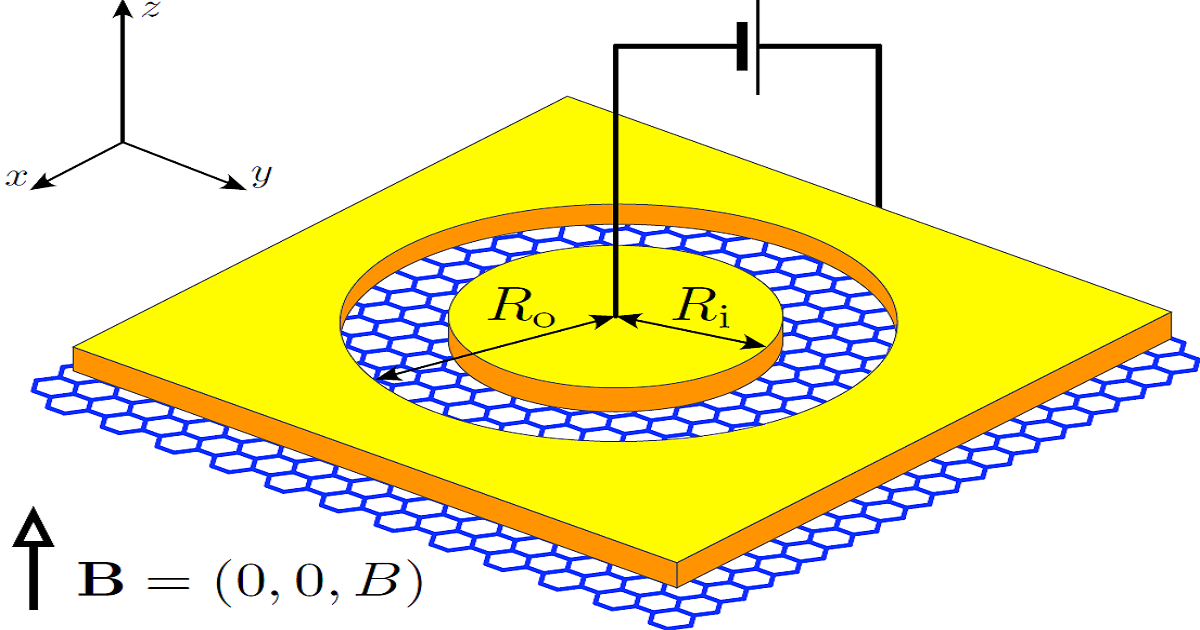Quantum Transport in Novel 2D Materials and Structures
A special issue of Materials (ISSN 1996-1944). This special issue belongs to the section "Quantum Materials".
Deadline for manuscript submissions: 20 February 2026 | Viewed by 3137

Special Issue Editor
Interests: graphene; quantum entanglement; superconductivity; condensed matter theory; 2D materials
Special Issues, Collections and Topics in MDPI journals
Special Issue Information
Dear Colleagues,
The advent of semiconducting heterostructures in the 1980s allowed researchers to demonstrate—in real world—several surprising phenomena described by theorists (at least to some degree) decades earlier, including the conductance quantization, quantum Hall effect, and Aharonov–Bohm effect.
The discovery of graphene and other truly two-dimensional (i.e., atomically thin) crystals, and the subsequent fabrication of nanostructures containing these materials, has not only made it possible to study the above phenomena more precisely but has also led to the discovery of entirely new physical effects, at least in the world of condensed matter, related to chirality, transmission via evanescent waves, or additional degrees of freedom (valleys) characterizing the effective Dirac quasiparticles. In addition, ambipolar doping, gate-controlled energy gap, mechanical flexibility, and the effects of deformation on the electronic structure allow for the design of electronic (or electromechanical) devices that have no analogues in silicon-based electronics.
In addition, in the field of 2D materials, there have been several significant recent discoveries. Firstly, the observation of unconventional quantum Hall effects in 2D materials is remarkable. This includes phenomena such as quantized Hall resistance and fractional quantum Hall effects. These findings have deepened our understanding of the quantum behavior in these materials. Secondly, the emergence of topological phases in 2D materials is an important advancement. For example, the discovery of the quantum spin Hall effect in monolayer graphene and transition metal dichalcogenides (TMDs) has opened up new research directions. It indicates the presence of unique topological properties in these 2D systems. Thirdly, the study of quantum transport in van der Waals heterostructures is a growing area of interest. When different 2D materials are stacked with precise atomic arrangement control, interesting phenomena occur. Examples include moiré superlattices that can modulate electronic properties and the correlated electron behavior that emerges due to strong electron–electron interactions. This research offers insights into the transport properties and potential applications of these complex 2D material structures. Overall, these recent discoveries in 2D materials have broadened our knowledge and hold great potential for various technological applications in the future.
This Special Issue aims to present a collection of research articles covering different aspects of charge, spin or energy transport in two-dimensional materials, or more complex structures containing these materials, from the analysis of physical principles to computer simulations and experiments.
We hope that the prospective set of results will both shed light on fundamental aspects of the phenomena under consideration and stimulate more practical device development.
Prof. Dr. Adam Rycerz
Guest Editor
Manuscript Submission Information
Manuscripts should be submitted online at www.mdpi.com by registering and logging in to this website. Once you are registered, click here to go to the submission form. Manuscripts can be submitted until the deadline. All submissions that pass pre-check are peer-reviewed. Accepted papers will be published continuously in the journal (as soon as accepted) and will be listed together on the special issue website. Research articles, review articles as well as short communications are invited. For planned papers, a title and short abstract (about 100 words) can be sent to the Editorial Office for announcement on this website.
Submitted manuscripts should not have been published previously, nor be under consideration for publication elsewhere (except conference proceedings papers). All manuscripts are thoroughly refereed through a single-blind peer-review process. A guide for authors and other relevant information for submission of manuscripts is available on the Instructions for Authors page. Materials is an international peer-reviewed open access semimonthly journal published by MDPI.
Please visit the Instructions for Authors page before submitting a manuscript. The Article Processing Charge (APC) for publication in this open access journal is 2600 CHF (Swiss Francs). Submitted papers should be well formatted and use good English. Authors may use MDPI's English editing service prior to publication or during author revisions.
Keywords
- graphene
- silicene
- germanene
- transition metal dichalcogenides
- 2D materials
- spintronics
- valleytronics
- nanotubes
- quantum transport
- Landauer–Buttiker formalism
Benefits of Publishing in a Special Issue
- Ease of navigation: Grouping papers by topic helps scholars navigate broad scope journals more efficiently.
- Greater discoverability: Special Issues support the reach and impact of scientific research. Articles in Special Issues are more discoverable and cited more frequently.
- Expansion of research network: Special Issues facilitate connections among authors, fostering scientific collaborations.
- External promotion: Articles in Special Issues are often promoted through the journal's social media, increasing their visibility.
- Reprint: MDPI Books provides the opportunity to republish successful Special Issues in book format, both online and in print.
Further information on MDPI's Special Issue policies can be found here.






